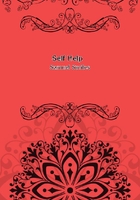
第69章
Robert Thorburn, the Royal Academician, like John Gibson, was born of poor parents. His father was a shoe-maker at Dumfries. Besides Robert there were two other sons; one of whom is a skilful carver in wood. One day a lady called at the shoemaker's and found Robert, then a mere boy, engaged in drawing upon a stool which served him for a table. She examined his work, and observing his abilities, interested herself in obtaining for him some employment in drawing, and enlisted in his behalf the services of others who could assist him in prosecuting the study of art. The boy was diligent, pains-taking, staid, and silent, mixing little with his companions, and forming but few intimacies. About the year 1830, some gentlemen of the town provided him with the means of proceeding to Edinburgh, where he was admitted a student at the Scottish Academy. There he had the advantage of studying under competent masters, and the progress which he made was rapid. From Edinburgh he removed to London, where, we understand, he had the advantage of being introduced to notice under the patronage of the Duke of Buccleuch. We need scarcely say, however, that of whatever use patronage may have been to Thorburn in giving him an introduction to the best circles, patronage of no kind could have made him the great artist that he unquestionably is, without native genius and diligent application.
Noel Paton, the well-known painter, began his artistic career at Dunfermline and Paisley, as a drawer of patterns for table-cloths and muslin embroidered by hand; meanwhile working diligently at higher subjects, including the drawing of the human figure. He was, like Turner, ready to turn his hand to any kind of work, and in 1840, when a mere youth, we find him engaged, among his other labours, in illustrating the 'Renfrewshire Annual.' He worked his way step by step, slowly yet surely; but he remained unknown until the exhibition of the prize cartoons painted for the houses of Parliament, when his picture of the Spirit of Religion (for which he obtained one of the first prizes) revealed him to the world as a genuine artist; and the works which he has since exhibited - such as the 'Reconciliation of Oberon and Titania,' 'Home,' and 'The bluidy Tryste' - have shown a steady advance in artistic power and culture.
Another striking exemplification of perseverance and industry in the cultivation of art in humble life is presented in the career of James Sharples, a working blacksmith at Blackburn. He was born at Wakefield in Yorkshire, in 1825, one of a family of thirteen children. His father was a working ironfounder, and removed to Bury to follow his business. The boys received no school education, but were all sent to work as soon as they were able; and at about ten James was placed in a foundry, where he was employed for about two years as smithy-boy. After that he was sent into the engine-shop where his father worked as engine-smith. The boy's employment was to heat and carry rivets for the boiler-makers.
Though his hours of labour were very long - often from six in the morning until eight at night - his father contrived to give him some little teaching after working hours; and it was thus that he partially learned his letters. An incident occurred in the course of his employment among the boiler-makers, which first awakened in him the desire to learn drawing. He had occasionally been employed by the foreman to hold the chalked line with which he made the designs of boilers upon the floor of the workshop; and on such occasions the foreman was accustomed to hold the line, and direct the boy to make the necessary dimensions. James soon became so expert at this as to be of considerable service to the foreman; and at his leisure hours at home his great delight was to practise drawing designs of boilers upon his mother's floor. On one occasion, when a female relative was expected from Manchester to pay the family a visit, and the house had been made as decent as possible for her reception, the boy, on coming in from the foundry in the evening, began his usual operations upon the floor. He had proceeded some way with his design of a large boiler in chalk, when his mother arrived with the visitor, and to her dismay found the boy unwashed and the floor chalked all over. The relative, however, professed to be pleased with the boy's industry, praised his design, and recommended his mother to provide "the little sweep," as she called him, with paper and pencils.
Encouraged by his elder brother, he began to practise figure and landscape drawing, making copies of lithographs, but as yet without any knowledge of the rules of perspective and the principles of light and shade. He worked on, however, and gradually acquired expertness in copying. At sixteen, he entered the Bury Mechanic's Institution in order to attend the drawing class, taught by an amateur who followed the trade of a barber. There he had a lesson a week during three months. The teacher recommended him to obtain from the library Burnet's 'Practical Treatise on Painting;' but as he could not yet read with ease, he was under the necessity of getting his mother, and sometimes his elder brother, to read passages from the book for him while he sat by and listened.